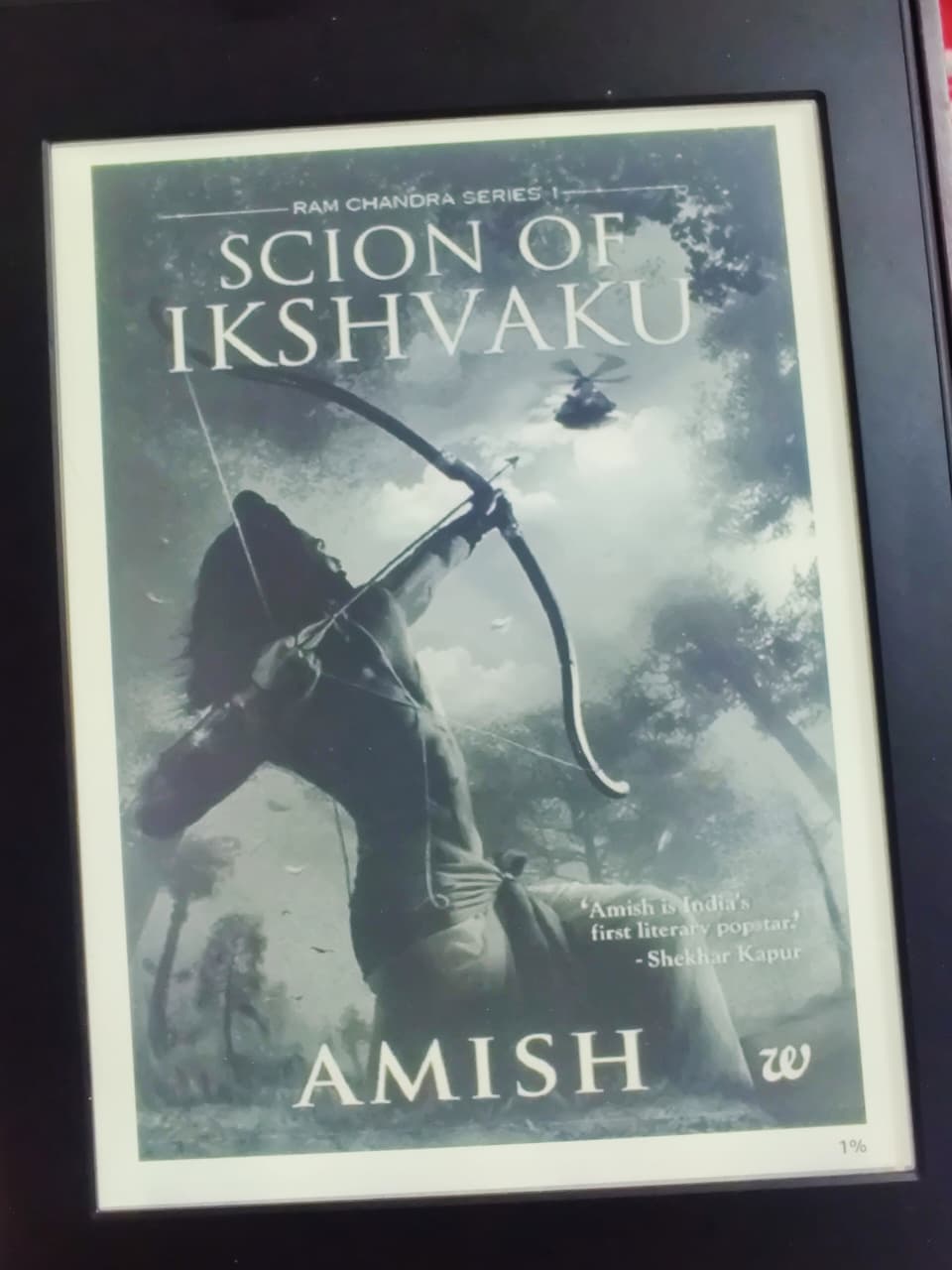Book Title: Scion Of Ikshvaku
Author: Amish Tripathi
Approx Read Time: 240 – 280 min
Review: I had been meaning to get my hands on the Ram Chandra Series books for quite some time. This has been ever since I had the good fortune of reading Amish Tripathi’s Shiva Trilogy almost a decade ago. (Thanks to my still-active Goodreads account for reminding me exactly when that was!) Back then, I never wrote detailed reviews; just tiny one-liners on my profile. But the feeling of those stories being a fresh, contemporary take on Indian mythology always stayed with me.
So when I came across the Ram Chandra series, I knew I wanted to read it. Why I didn’t pick it up sooner, I have no satisfactory answer for. I guess… life happens? Anyway, I’m reading the books one by one now, and I plan to review each before moving to the next. Hopefully, that keeps each review unbiased and in-the-moment. So, let’s dive in.
Quick note: This review contains no major spoilers.
The book opens with a prologue at the moment Sita is abducted. From there, we go straight into the origin story (yes, my brain instantly called it an “origin story,” and yes, that superhero-movie lingo refuses to leave!). The narrative takes us back to King Dashrath’s reign, Ram’s birth, and his early life, eventually looping back to the abduction scene.
Readers familiar with The Ramayana may either enjoy or question the new perspectives. The story uses the same core characters and familiar milestones, but it reimagines them in a more humane and grounded world. Some of the changes are bold:
- Sita and Manthara are given very different roles.
- Kaikeyi’s influence on Ram’s life feels reduced.
- Titles like “Vishnu” and “Mahadev” are treated as honours/titles given to extraordinary people; not divine incarnations.
The grounded treatment continues into the book’s philosophy. A large part of the narrative focuses on the Masculine Way vs the Feminine Way – law versus compassion, rigid systems versus empathetic judgment. Some of the conversations feel like modern political arguments retrofitted into ancient Ayodhya, but surprisingly, they don’t disrupt the flow. Those discussions between the guru and the four princes felt like invitations not just for the young royals, but for the reader as well.
Overall, Scion of Ikshvaku is a breeze to read. The language is simple, the world is easy to follow, and the plot moves quickly. The beginning is a little heavy because of the number of character introductions. I personally reread a few paragraphs to keep track of everyone (but that’s a me problem, not the writing). I finished the book in three nights, reading close to two hours each evening.
This is a modern, accessible retelling that brings familiar characters down from the pedestal and into a human space. The emotional moments land well, and once the story settles, it’s genuinely hard to put down. As someone who loved the Shiva Trilogy, I enjoyed Amish’s continued ability to humanize divine figures. While this book is a fantastical adventure, it leans very lightly into political philosophy and the morality of governance; something some readers may like, and others may find less exciting.
If you enjoy mythology retellings with a modern touch, you’ll likely enjoy this book. It’s not a deep mythological dive; it’s a contemporary reimagining of The Ramayana for readers who want a fresh entry point into the epic.
Who might not connect:
- Readers seeking a very traditional Ramayana
- Those wanting deep Vedic scholarship
Who will enjoy this:
- Fans of the Shiva Trilogy
- Readers who like mythology retellings with light philosophy
- People looking for fast-paced, accessible mytho-fiction
Ready to dive in? You can get your copy on Amazon.
Disclaimer: This post contains affiliate links. If you click through and make a purchase, I may earn a commission at no additional cost to you. Thank you for your support!
Explore More Reviews: I always believe one should look at multiple perspectives when looking at a book’s review. So here are a few that I felt that provide a different perspective. Go read if you want to explore a bit more:
- A clinical balanced review from Blue Rose Publishers
- Urmi Chanda Vaz’s detailed article/review on Scroll.in
- Aadithya Varma’s review on Critical Book Review is another deep dive not to be missed
- Ankita Chauhan’s warm review with some quotable quotes from the book
- Anurag Bhandari’s review delves into Amish’s writing style a bit more
- Jean Burke-Spraker’s detailed take on the whole Ramayana premise while she reviews the book
- Deepan’s disappointed filled review where he expects highly from Amish’s book
- Tulika’s review, which by her own admission is very heavily biased as she had consumed the Ramanand Sagar’s Ramayana TV series like many of Indians have!
I would love to hear your thoughts as well. So what did you think of Amish Tripathi’s storyline? Drop them below!
Discover more from Different Is Something
Subscribe to get the latest posts sent to your email.

